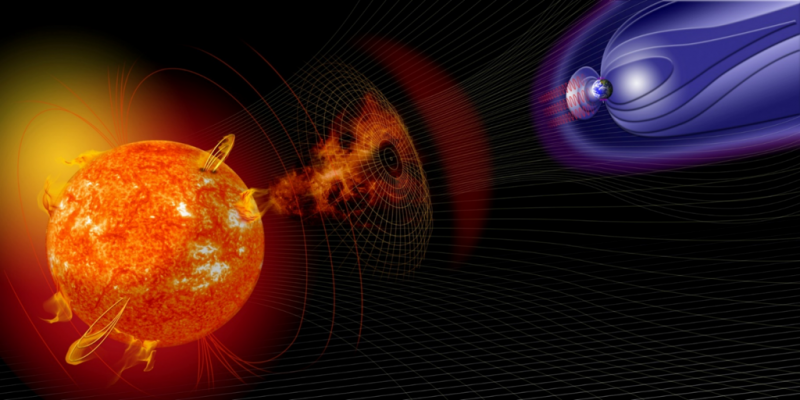Space weather events fry electronics and power grids, disrupt global positioning systems, cause shifts in the range of the Aurora Borealis, and raise the risk of radiation to astronauts or passengers on planes crossing over the poles. The last major space weather event struck Earth in 1859. “We have all these technological assets that are at risk,” said Gabor Toth, professor of Climate and Space Sciences and Engineering at the University of Michigan. “If an extreme event like the one in 1859 happened again, it would completely destroy the power grid and satellite and communications systems – the stakes are much higher.” Motivated by the White House National Space Weather Strategy and Action Plan and the National Strategic Computing Initiative, in 2020 the National Science Foundation (NSF) and NASA created the Space Weather with Quantified Uncertainties (SWQU) program. It brings together research teams from across scientific disciplines to advance the latest statistical analysis and high performance computing methods within the field of space weather modeling, reports Phys.org. Toth helped develop today’s preeminent space weather prediction model, which is used for operational forecasting by the National Oceanic and Atmospheric Administration (NOAA). On Feb. 3, 2021, NOAA began using the Geospace Model Version 2.0 to predict geomagnetic disturbances. The Geospace Model is based on a global representation of Earth’s geospace environment that includes magnetohydrodynamics – the properties and behaviour of electrically conducting fluids like plasma interacting with magnetic fields, which plays a key role in the dynamics of space weather. The Geospace Model predicts magnetic disturbances on the ground resulting from geospace interactions with solar wind. Such magnetic disturbances induce a geoelectric field that can damage large-scale electrical conductors, such as the power grid. Short-term advanced warning from the model provides forecasters and power grid operators with situational awareness about harmful currents and allows time to mitigate the problem and maintain the integrity of the electric power grid, NOAA announced at the time of the launch. As advanced as the Geospace Model is, it provides only about 30 minutes of advanced warning. Toth’s team is one of several groups working to increase lead time to one to three days. Doing so means understanding how activity on the surface of the Sun leads to events that can affect the Earth.
https://phys.org/news/2021-08-earth-space-storms.html


